Artificial Intelligence is changing how we approach search engine optimisation. With over 85% of marketers believing AI will significantly impact content creation and 64.48% of SEO professionals prioritising AI-generated insights for accuracy, it’s clear that AI-powered SEO is no longer optional – it’s essential.
AI SEO combines machine learning, natural language processing, and large language models to enhance keyword research, content optimisation, technical analysis, and performance monitoring. This comprehensive guide will walk you through implementing AI in your SEO strategy step by step.
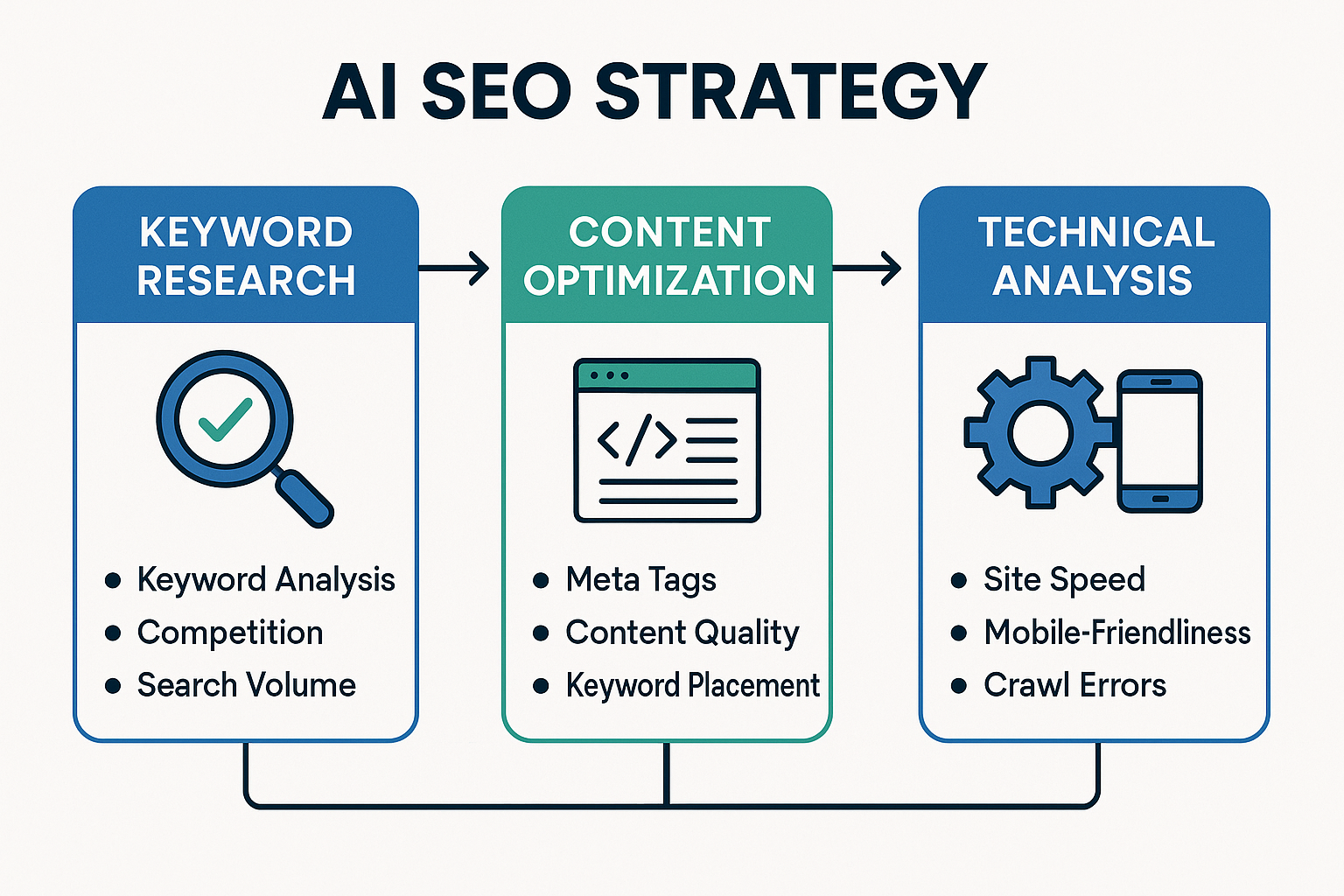
Understanding AI SEO in 2025
What is AI SEO?
AI SEO integrates artificial intelligence technologies into search optimisation strategies to automate and enhance key SEO components. Unlike traditional reactive SEO approaches, AI enables predictive analysis and real-time optimisation that adapts to search engine updates and user behaviour changes.
Google’s algorithms now use AI systems like RankBrain, BERT, and MUM to analyse search queries with sophisticated nuance. These systems prioritise relevance, authority, and user engagement over traditional keyword matching.
Why AI SEO Matters Now
The competitive advantage lies in working with AI rather than against it. Businesses using AI for SEO have shown measurable improvements, with 49.2% reporting better rankings following algorithm updates. Additionally, 82% of enterprise SEO specialists plan to invest more in AI tools, highlighting their role in managing large-scale operations.
Step 1: AI-Powered Keyword Research
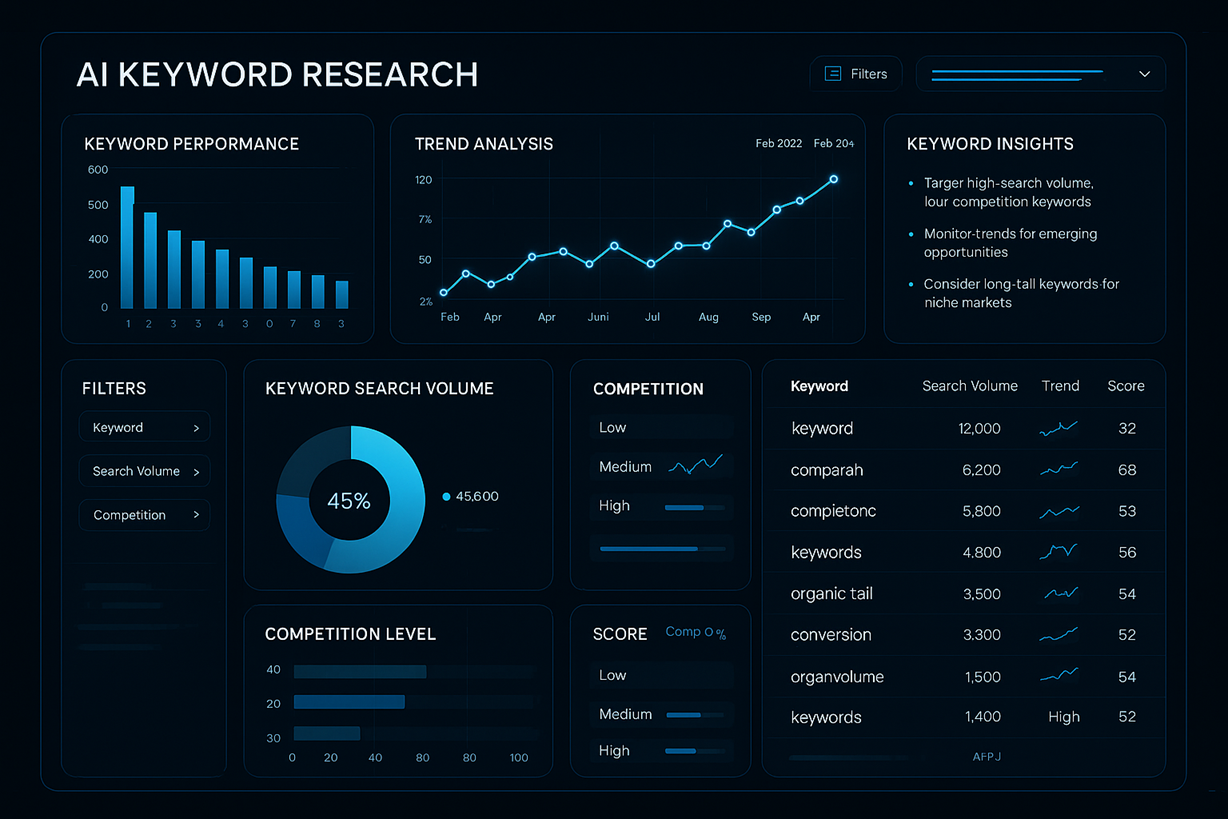
Traditional keyword research is becoming outdated. AI-powered tools now analyse user intent, predict trends, and identify high-impact keywords with unprecedented accuracy.
Getting Started with AI Keyword Tools
Semrush stands out as the top choice for AI keyword research. It infuses AI into every part of the SEO process, offering personalised metrics that show how your domain will rank for specific keywords. The Keyword Magic Tool uses AI to provide personalised data based on your domain’s potential
Other recommended AI keyword tools include:
- Ahrefs for robust multi-search-engine analysis
- Surfer SEO for real-time keyword optimisation during content creation
- UberSuggest for content marketing-focused keyword research
- KWFinder for unique keyword opportunity identification
Step-by-Step AI Keyword Research Process:
- Define Your Objectives: Use AI tools to analyse historical data and market trends to suggest realistic, data-driven goals
- Input Seed Keywords: Start with 2-3 primary keywords related to your business
- Let AI Analyse: AI tools will generate semantic keyword clusters, analyse competition, and identify search intent patterns
- Review AI Suggestions: Focus on keywords with good search volume but manageable competition levels
- Create Keyword Clusters: Group related keywords by topic and search intent for content planning
Step 2: AI Content Generation and Optimisation
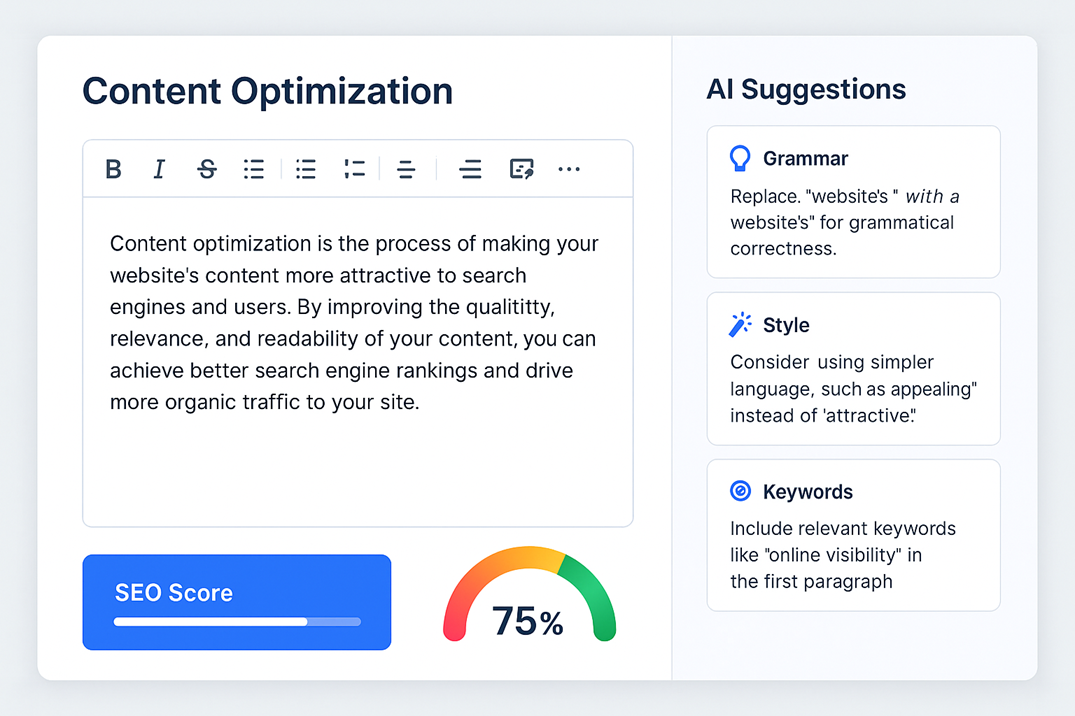
AI revolutionises content creation by generating drafts, optimising existing content, and ensuring alignment with search intent.
Content Generation Process
Choose Your AI Writing Tools:
- ChatGPT for versatile content generation and multiple draft creation
- Jasper AI for high-quality, SEO-optimised content across various niches
- GetGenie AI for comprehensive SEO-integrated content creation
Step-by-Step Content Creation:
- Keyword Analysis: Input your target keyword into tools like GetGenie’s Blog Wizard to analyse search volume, user intent, and competitor data
- Generate Multiple Drafts: Create 2-3 different versions of your content to have alternatives that cover various search intents
- Optimise Content Structure: Use AI to generate compelling titles, introductions, and outlines based on top-ranking competitor analysis
- Add Semantic Keywords: Incorporate AI-suggested NLP keywords naturally throughout your content
- Ensure Originality: Use AI plagiarism checkers to verify content uniqueness and rewrite sections as needed
Real-Time Optimization
Tools like Surfer SEO provide real-time content scoring as you write, tracking keyword usage, readability, and SEO recommendations. This keeps you focused on creating engaging content while meeting technical requirements.
Step 3: AI-Driven On-Page SEO Automation
AI significantly simplifies on-page optimisation by automating meta tag creation, internal linking, and schema markup implementation.
Automated On-Page Elements:
- Meta Tags and Descriptions: AI tools like RankMath and Surfer SEO automatically generate optimised title tags and meta descriptions that improve click-through rates.
- Internal Linking: AI identifies opportunities to link related content, building a logical site structure and distributing link equity effectively.
- Schema Markup: Automated structured data implementation helps search engines understand your content better, leading to rich snippets and enhanced SERP visibility.
Step-by-Step On-Page Optimisation:
- Audit Current Pages: Use AI tools to scan existing content for optimisation opportunities
- Implement AI Suggestions: Apply recommendations for title tags, headers, and meta descriptions
- Optimise Content Structure: Ensure proper H1-H6 hierarchy based on AI analysis of top-ranking pages
- Add Internal Links: Let AI suggest relevant internal linking opportunities
- Monitor Performance: Track improvements in rankings and click-through rates
Step 4: Technical SEO Automation
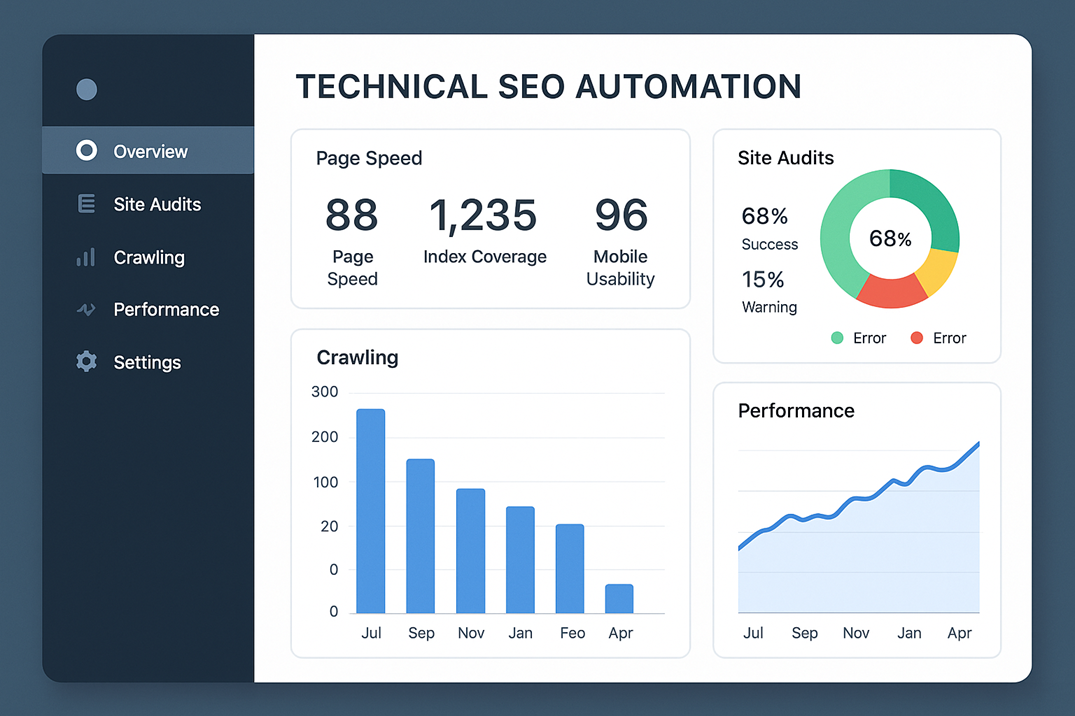
AI excels at handling repetitive technical SEO tasks that would take hours to complete manually.
Key Technical SEO Automations:
- XML Sitemap Management: AI automatically generates and updates sitemaps, ensuring search engines can properly index your site.
- Technical Audits: AI tools continuously monitor for broken links, duplicate content, missing meta descriptions, and schema markup issues, providing immediate alerts.
- Mobile Optimisation: AI analyses mobile performance, page speed, and user experience factors, suggesting specific improvements.
- Core Web Vitals Monitoring: AI tracks loading speed, interactivity, and visual stability—essential ranking factors in Google’s algorithm.
Implementation Steps:
- Set Up Monitoring Tools: Use AI-powered tools like Google Search Console, enhanced with AI insights
- Automate Regular Audits: Schedule weekly technical scans using tools like Sitebulb
- Implement Automated Fixes: Set up systems to automatically address common technical issues
- Monitor Performance: Track improvements in crawl efficiency and indexing speed
- Optimise for Mobile-First: Ensure AI continuously optimises for mobile performance
Step 5: AI Analytics and Performance Monitoring
AI transforms how we track and analyse SEO performance, providing predictive insights and automated reporting.
Advanced AI Analytics Features:
- Automated Alert Systems: Machine learning algorithms establish performance baselines and detect statistically significant changes automatically.
- Attribution Modelling: AI isolates the impact of specific SEO changes among hundreds of variables, providing accurate performance attribution.
- Algorithm Impact Assessment: AI analyses ranking fluctuations to identify algorithm update patterns, often detecting changes before official announcements.
Performance Tracking Steps:
- Set Up AI-Powered Analytics: Implement tools that provide natural language alerts and contextual recommendations
- Establish Baselines: Let AI learn your normal performance patterns
- Monitor Key Metrics: Track rankings, traffic, conversions, and user engagement signals
- Analyse Trends: Use AI to identify seasonal patterns and predict future performance
- Optimise Based on Insights: Make data-driven adjustments to your strategy
Step 6: Optimising for AI Search Features
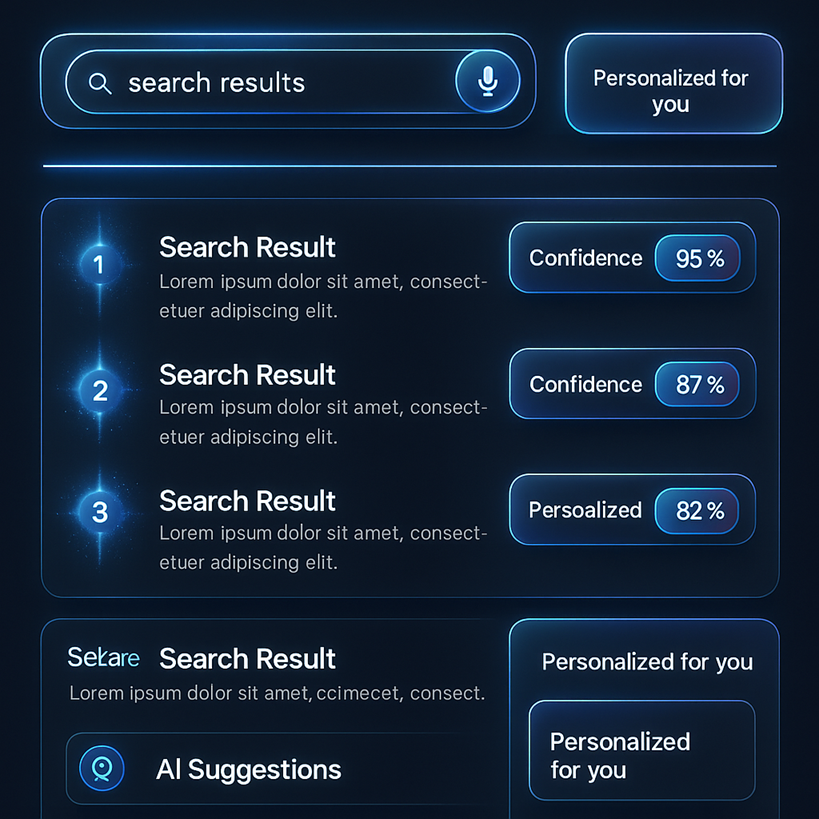
With over 13% of Google results now including AI Overviews, optimising for AI-powered search features is crucial.
AI Search Optimisation Strategies:
- Featured Snippet Targeting: AI systems identify queries that generate featured snippets and analyse structural patterns for optimal placement.
- Question-Focused Content: Structure content to answer specific questions that users commonly ask in your niche.
- Entity Definition Optimisation: Ensure AI can clearly define entities and relationships in your content for confident referencing.
- Voice Search Optimisation: Optimise for natural language queries as voice search accounts for 20% of searches on Google App.
Implementation Guide:
- Analyse Current SERP Features: Identify which of your target keywords trigger AI-powered results
- Structure Content for AI: Use clear headings, bullet points, and direct answers to common questions
- Optimise for Voice Queries: Include conversational keywords and FAQ-style content
- Implement Structured Data: Use schema markup to help AI understand your content relationships
- Monitor AI Feature Appearance: Track when your content appears in AI Overviews and featured snippets
Best AI SEO Tools for 2025
Comprehensive SEO Platforms:
- Semrush: Best overall AI SEO experience with a comprehensive toolset
- Ahrefs: Excellent for content optimisation and backlink analysis
- SE Ranking: Strong for technical SEO and automated audits
Content Optimisation Tools:
- Surfer SEO: Real-time content optimisation and SEO scoring
- MarketMuse: Advanced content planning and gap analysis
- Frase: Content research and competitive analysis
Technical SEO Automation:
- Alli AI: Automated on-page optimisation
- BrightEdge: Predictive analytics and performance forecasting
Common AI SEO Challenges and Solutions
Quality vs. Quantity Balance
While AI enables rapid content creation, maintaining quality is crucial. Sites with AI-generated content grew 5% faster, but human-written content was 4% less likely to be affected by algorithm updates. The solution is combining AI efficiency with human oversight and editing.
Avoiding Over-Automation
Not every SEO task benefits from AI automation. Use AI for data analysis, repetitive tasks, and pattern recognition, but maintain human input for strategy, creativity, and quality control.
Keeping Up with Algorithm Changes
AI search algorithms evolve rapidly. Stay updated by following industry publications, joining SEO communities, and continuously testing your AI-optimised content performance.
Future-Proofing Your AI SEO Strategy
Embrace Continuous Learning
The AI SEO landscape changes rapidly. Dedicate time to learning new tools, testing strategies, and adapting to algorithm updates. Consider the approach of building machine learning knowledge gradually through daily practice.
Focus on User Experience
While AI helps with technical optimisation, never lose sight of creating valuable user experiences. AI should enhance, not replace, your focus on serving your audience’s needs.
Monitor AI Search Trends
Stay informed about developments in AI search features, voice search adoption, and visual search capabilities. These trends will continue shaping how users discover and interact with content.
Getting Started Today
Immediate Action Steps:
- Start with Free Tools: Begin with free versions of Semrush, Ubersuggest, or Google’s AI-enhanced Search Console
- Focus on One Area: Choose either keyword research, content optimisation, or technical SEO to start with
- Test and Measure: Implement AI tools gradually and measure their impact on your SEO performance
- Scale Gradually: As you see results, expand AI implementation to other areas of your SEO strategy
- Stay Updated: Follow AI SEO developments and continuously adapt your approach
Conclusion
AI is transforming SEO from a reactive to a predictive discipline. By implementing AI-powered keyword research, content optimisation, technical automation, and performance monitoring, you can create a smarter, more efficient SEO strategy that adapts to algorithm changes and user behaviour shifts.
The key to success lies in balancing AI automation with human insight, focusing on user value while leveraging AI’s analytical power. Start with the tools and techniques outlined in this guide, measure your results, and gradually expand your AI SEO implementation.
Remember that AI SEO is not about replacing human expertise but enhancing it. The businesses that thrive in 2025 and beyond will be those that successfully combine AI efficiency with human creativity and strategic thinking.